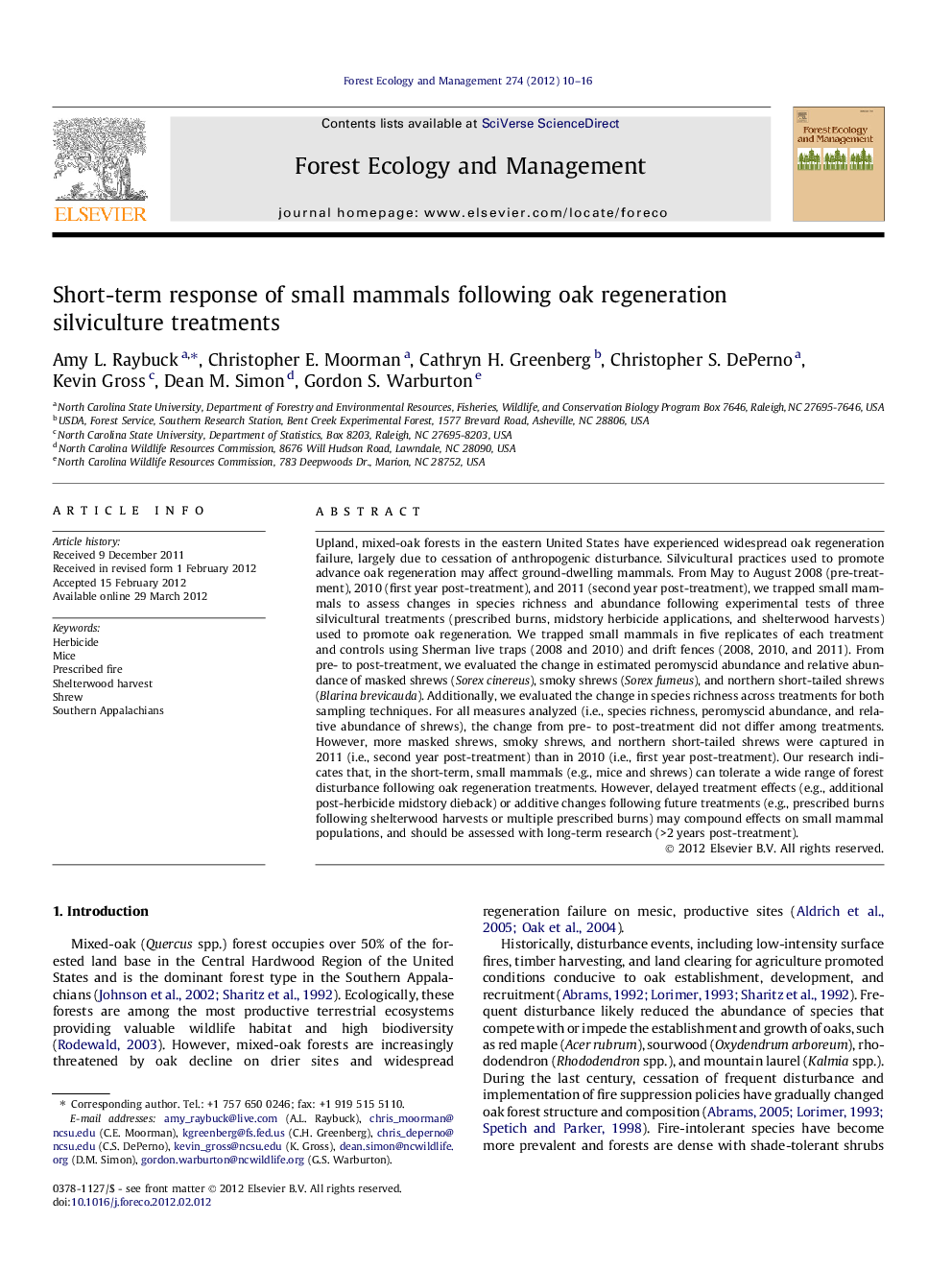| کد مقاله | کد نشریه | سال انتشار | مقاله انگلیسی | نسخه تمام متن |
|---|---|---|---|---|
| 87165 | 159236 | 2012 | 7 صفحه PDF | دانلود رایگان |

Upland, mixed-oak forests in the eastern United States have experienced widespread oak regeneration failure, largely due to cessation of anthropogenic disturbance. Silvicultural practices used to promote advance oak regeneration may affect ground-dwelling mammals. From May to August 2008 (pre-treatment), 2010 (first year post-treatment), and 2011 (second year post-treatment), we trapped small mammals to assess changes in species richness and abundance following experimental tests of three silvicultural treatments (prescribed burns, midstory herbicide applications, and shelterwood harvests) used to promote oak regeneration. We trapped small mammals in five replicates of each treatment and controls using Sherman live traps (2008 and 2010) and drift fences (2008, 2010, and 2011). From pre- to post-treatment, we evaluated the change in estimated peromyscid abundance and relative abundance of masked shrews (Sorex cinereus), smoky shrews (Sorex fumeus), and northern short-tailed shrews (Blarina brevicauda). Additionally, we evaluated the change in species richness across treatments for both sampling techniques. For all measures analyzed (i.e., species richness, peromyscid abundance, and relative abundance of shrews), the change from pre- to post-treatment did not differ among treatments. However, more masked shrews, smoky shrews, and northern short-tailed shrews were captured in 2011 (i.e., second year post-treatment) than in 2010 (i.e., first year post-treatment). Our research indicates that, in the short-term, small mammals (e.g., mice and shrews) can tolerate a wide range of forest disturbance following oak regeneration treatments. However, delayed treatment effects (e.g., additional post-herbicide midstory dieback) or additive changes following future treatments (e.g., prescribed burns following shelterwood harvests or multiple prescribed burns) may compound effects on small mammal populations, and should be assessed with long-term research (>2 years post-treatment).
► Several silvicultural practices have been suggested to restore upland oak forest.
► We assessed changes in small mammals following three oak regeneration practices.
► Changes in small mammal richness and abundance did not differ among treatments.
► In the short-term, mice and shrews may tolerate a wide range of forest disturbance.
► Delayed treatment effects warrant long-term research (>2 years post-treatment).
Journal: Forest Ecology and Management - Volume 274, 15 June 2012, Pages 10–16